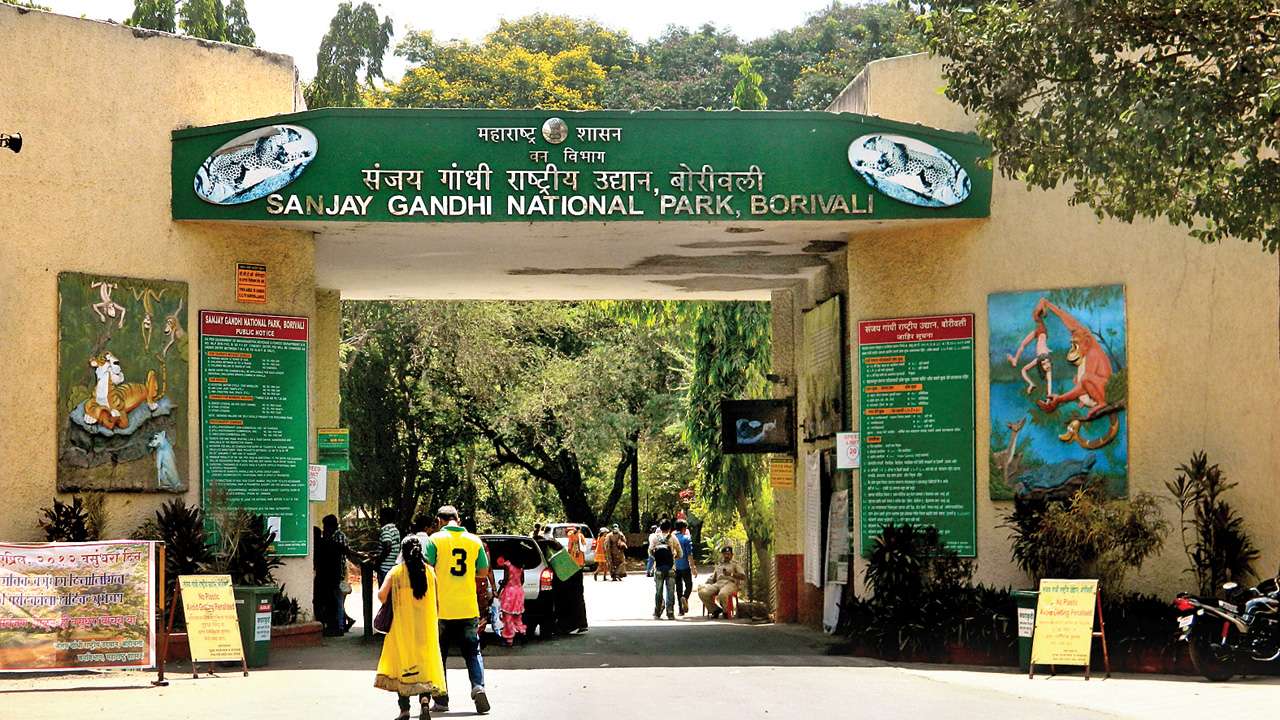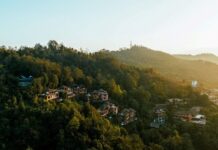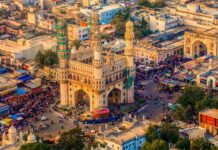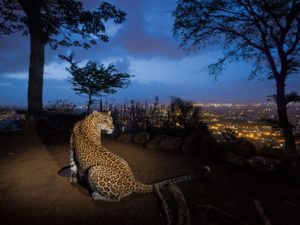 Watch lions as close as six feet away
Watch lions as close as six feet away
The Sanjay Gandhi or Borivali National Park has the distinction of being the only National Park in Mumbai. The park is quite important historically and culturally, with archaeological sites that trace back more than 2,000 years and more than 100 caves, many of religious importance. It plays host to various wildlife species like the panther, antelope, mouse deer, and wild bear. Children particularly enjoy riding the colorful toy train here, as it winds its way through the vast park. In the Lion Safari Park, visitors can view lions as close as six feet away from the special park vehicles.
The park is a paradise for the lovers of avifauna, and it isn’t very easy for them not to be attracted by their charm here in the Sanjay Gandhi National Park.
The park is located in Borivali, east of the Thane district, a distance of 40 km north from Mumbai. The climate of the park is pleasant during winter (November-March) and hot during summer. The temperature is on the rise from the month of March until the monsoons break here in mid-June. October offers relief from the humidity and heat. Best time to visit is September to March
Tourist attractions
Flora – The forest cover in the park can be divided into two main categories, i.e., South Indian moist deciduous and Semi-Evergreen. These two types can be further classified into four subcategories, and they are moist teak-bearing forest, mangrove scrub, southern moist mixed deciduous forest, and western subtropical hill forest. The region has functional biodiversity, and significant trees and plants include kadamba, teak, karanj, shisam, and species of acacia, Ziziphus, euphorbia, the flame of the forest, red silk cotton and many more varieties of flowers. During the monsoon, almost the entire park is awash with the rainbow hues of the flowers that bloom here.
Avifauna – The Park is a paradise for the bird watchers of Mumbai. Despite receiving the highest number of visitors, the park has a large number of bird species like jungle owlets, golden orioles, racket-tailed drongos, minivets, magpies, robins, hornbills, bulbuls, sunbirds, peacock, and woodpeckers. At many times, migratory and resident birds like paradise flycatcher, kingfisher, mynas, drongos, swifts, gulls, egrets, and herons have also been seen here.
In total, 251 species of birds have been seen here according to the wildlife experts that include water and land birds.
Wildlife – The park is known to shelter wildlife right from the time urbanization began in Mumbai. One can have encounters with several of the species, including spotted deer, black-naped hare, barking deer, porcupine, palm civet, mouse deer, rhesus macaque, bonnet macaque, Hanuman langur, Indian flying fox, and sambhar.
One is surprised by the density of leopards in this park despite its nearness to an urban settlement. One can also encounter here a hyena or four-horned antelope. Reptiles have also made this park their habitat, and one can see crocodiles in the Tulsi Lake, and pythons, cobras, monitor lizards, Russell’s viper, bamboo pit viper and Ceylonese cat snake here.
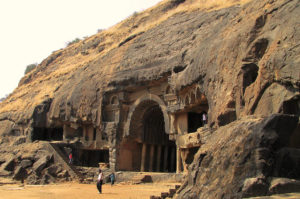
Kanheri Caves – Kanheri or Kanhasela, as the two inscriptions from the place have named it, is the most significant Buddhist monastic establishment on the Konkan coast. It is situated in the heart of the Sanjay Gandhi National Park and is one of the better-known sites in Mumbai.
The architectural activity at Kanheri began three centuries before Christ-almost immediately after the introduction of Buddhism in this region. The first simple caves were excavated during the reign of the Satvahana kings who came to the fore after the disintegration of the Mauryan Empire in India. In the earliest period, the caves were meant to shelter wandering monks during the rainy season. At this time, vault-roofed chaitya griha were in vogue. From the 1st century AD, the caves appear to have been in occupation throughout the year.
The monks were provided with cells with stone benches to sleep, along with accessories like a large number of cisterns, refectories, and even bathing facilities. Food, medicine, and clothing appear to have been stored here.
The huge chaitya griha is believed to have been added during the reign of Gautamiputra Satakarni (AD 106-130). Unprecedented in dimension and beauty and the first of its kind on the Konkan coast, it began to attract numerous monks and laymen alike. A large number of donations appear to have been made by citizens, traders, royal women, even foreigners (yavanas) from nearby cities like Kalyan, Sopara, and Thane.
However, the latter part of the 3rd century AD was the most active period for the Kanheri establishment, with numerous cells being added. There are suggestions of it being a school, with 60 to 70 monks in residence, and had dining rooms with a capacity of catering to 120 diners.
An unusual feature at Kanheri is the number of open benches cut into rocks and benches in the verandahs or frontcourts of almost all the caves.
Places around
The Sanjay Gandhi National Park is a part of Greater Mumbai, and Mumbai is one of the largest metropolises in the world and the largest in India. The main highlights of the city are the Gateway of India, Prince of Wales Museum, Elephanta Island, Flora Fountain, Haji Ali’s Tomb, Kamla Nehru Park, Chhatrapati Shivaji Terminus, Nehru Planetarium, Nehru Science Centre, and Marine Drive.
Best time to visit
September-March is the best time to visit the park, as, during these months, the climate remains pleasant. Visit the park during monsoon is not recommended.
How to reach
Air – The nearest airport is Santa Cruz at a distance of 16 km for domestic air travel. This airport is connected to almost all the major Indian cities with regular flights. The nearest international airport is Sahar, at a distance of around 20 km from the park.
Rail – Chhatrapati Shivaji Terminus (CST) at a distance of 40 km is the nearest railway hub connected to almost all parts of India by regular trains. Borivali Station is the closest connection to Mumbai CST and Mumbai Central Railway terminuses.
Road – The Park is connected to all parts of Mumbai and other places in Maharashtra with perfect road connections. Buses ply on Sunday’s and holiday’s from Mumbai to the park. Chartered vehicles are available to the park on all days from Mumbai.

